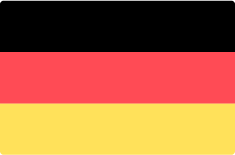What are Reflective Films?
Retroreflective or just reflective films cast back incoming light in the direction of the light source. This property is used in several applications such as contour markings, safety markings on vehicles and machines, traffic signs, construction barriers, gates, etc. that need to be made visible at night to guide or warn people about potential hazards.
The reflective films in our product range have different features and properties. Most of them are self-adhesive with different adhesive for different kinds of substrates, but some of them are made for sew-on or iron-on application.
Features of Reflective Films
One important feature of reflective films is the grade of reflectivity. The higher the reflectivity class (RA1, RA2 or RA3), the higher the coefficient of retroreflection. Reflective films are mainly distinguished in two types depending on their structure: glass beads (type A and type B) or microprisms (type C). Type A reflective films use embedded glass beads while type B films have encapsulated glass beads.
More detailed information on the different types and classes of reflective films in our blog post.
Reflective films are available in many different colours including neon colours and chevrons in red and white or black and yellow.
Fields of Application for Reflective Films
Reflective films are often used on vehicles of all kinds to make them more visible or highlight the special purpose or right a vehicle might have. Some typical examples of reflective films on vehicles are emergency vehicles like ambulances and fire engines, heavy goods vehicles, long and wide trucks, vehicles transporting hazardous goods and agricultural machinery. The design of such safety markings varies depending on the standards and regulations certain vehicles are subject to: red and white chevrons, conspicuity tape or a large range of signs and plates with reflective films for vehicle marking.
Reflective films are also crucial on traffic signs and traffic control devices such as road delineators and construction site equipment such as obstruction markers and barrier fences, the latter often easily recognisable by its red and white colours.
Red and white or black and yellow chevron safety markings made of reflective film are commonly used for industry purposes to mark machines, containers, doors, steps and other stationary objects as well as movable items such as cranes, lifting platforms, forklifts and other vehicles. See Safety Markings
Various signs and plates used on vehicles feature reflective films to be more visible or to make the information on the sign more visible. Typical examples are hazard plates for trucks transporting dangerous goods or projecting load, convoi exceptionnel and rear marker boards for long and wide vehicles, speed labels and tail lift flags. See Signs and Plates
Reflective fabrics are especially designed to be applied to textiles. They are used to make work wear more visible for workers operating in high-risk situations e.g., around road construction sites or in rescue operations. Depending on the use, there are different methods of application (self-adhesive, iron-on or sew-on) and different types (fluorescent, segmented, fire-retardant, etc.) available.
The fields of application for reflective films are nearly limitless and also extend into private use. Reflective tapes and reflective stickers or iron-ons are more and more used to make personal equipment more visible and can be found e.g., on bicycles, walking aids, baby carriages, wheelchairs, helmets and outdoor gear.
Plotting and Application of Reflective Films
Most reflective films are apt for different cutting and plotting methods. Usually, the data sheets of the respective product contain more information about processing the films. Depending on the structure of the film, it might be necessary to seal the cutting edges after application.
Before applying reflective films, the substrate must be cleaned thoroughly from dirt and grease to ensure optimal adhesion of the reflective film. Remove the carrier film or paper that protects the adhesive side of the film and place the film on the substrate. For easy repositioning, some films can be applied using soapy water. Detailed information about processing and application are usually provided in the respective data sheets of the product. For professional results, accessories and tools like squeegees can be used. See Accessories
Care and Removal of Reflective Films
Most reflective films can be cleaned with standard cleaning liquids; the best is usually warm soapy water. Wipe the film with a humid cloth and rinse with clear water. Avoid abrasive cleaning agents and check the instructions of the respective reflective film.
Depending on the kind of adhesive that is used, reflective films might be removable or permanent. Some films are only for temporary application and can be removed easily, some are removable with heat and some are only removed with great effort and leave residues of the adhesive that can be removed using adhesive remove liquids.



